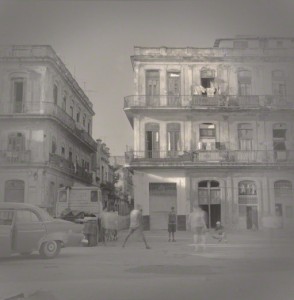La neblina del ayer
February 29, 2012 by andoyle
I think it’s a shame that the UK-based Bitter Lemon Press decided that Havana Fever should be the title of the English edition of Leonardo Padura’s most recent novel in the Mario Conde series, originally titled La neblina del ayer. The sizzling nightlife of pre-Castro Havana is where we meet the beautiful yet elusive Bolero singer Conde becomes almost obsessed with in one of the many plot threads of Padura’s intricately woven mystery. La neblina del ayer (the mists of yesterday) however, does a far better job of capturing the careful negotiating of past and present that often takes place in revolutionary Cuba and is clearly present in Padura’s story.
The tensions caused by this attempt to negotiate the past and the present, the effort to compromise revolutionary ideals with an often times harsh and sobering reality are felt all throughout the island, on varying levels. We see them in in Raul’s speeches post-2006 where he outlines plans for liberal economic reforms while at the same time assuring no Cuban will be “abandoned to their fate” due to the social costs of privatization. According to Omar Everleny, a professor at the Center for the Study of the Cuban Economy at the University of Havana, “when you read the Guidelines and Raúl’s speeches, you realize he’s determined to change things. At the same time, I also realize he’s committed to the past, and that’s the complicated part — his commitment to history,” (Chase, Cuba Rethinks the Revolution). Julia Sweig writes about Cuba’s resourcefulness in the face of the deep economic hardship of the Special Period in a section of her book Cuba: What Everyone Needs to Know. “Thus, even in the context of terrible and debilitating material deprivation, leading Cuban thinkers embraced the opportunity to chart their own course and helped to usher in a period of enormous creative thinking.” (Sweig, 130) But what does this “new course” mean for Cuba’s revolutionary history and its people?
These tensions are equally visible on the landscape of Cuban’s daily life, as we saw in the characters of Padura’s novel. It might be a stretch of the imagination, but the progression of Mario Conde’s life bears interesting similarities to the Revolution itself. The retired detective is growing older, has become skinny from scarcity, and is not as invincible as he was in his youth. Yet he is resilient. At one point in the novel he is severely beaten, left almost for dead, but still refuses to give up. Conde is also maybe less incorruptible than he once was and may be willing to do things he once wouldn’t have, to ensure his own survival. By the end of the story we find Conde, the most honorable member of Havana’s police force turned genuinely honest book dealer, pocketing a few samples of Cuba’s most prized publications for himself and his closest friends… and shedding bitter tears over it.
Other characters in the novel depict similar conflicts. Dionisio Ferrero, once “ a hundred percent behind the Revolution,” who had gone to “educate the illiterate in the hills of Oriente,” (Padura, 24), is forced to sell his nearly mythical library, disobeying his mother’s dying wishes and threatening a part of Cuba’s invaluable cultural and artistic legacy, in order to provide the next day’s meal for himself and his sister. The backgrounds and perspectives of the book dealers who negotiate this sale are also telling. There is Conde, the older, prematurely retired detective, who is often morally conflicted by his behavior and new found career path. His partner Yoyi, is a university trained civil engineer, who having been born to a time of scarcity and shortages, found that building public roads and bridges could not provide for him the life the buying and selling of second hand books, antiques and works of art could. Both these characters, while fictional, represent the very real, and potentially problematic issue of the vast number of professionals “deskilling” and leaving the public sector for industries, such as tourism or black market dealing, that provide access to the otherwise unattainable foreign currency. Throughout Padura’s story, in his description of grim realities of Havana’s poorest barrios and the moral dilemmas of his characters, we are reminded of the lofty toll the Special Period has taken on the Revolution. Its face has undoubtedly changed. What the lasting effects of these “new courses” being drawn into the map of Revolutionary Cuba are has yet to be seen.
Sources:
Julia Sweig, Cuba: What Everyone Needs to Know (New York: Oxford University Press, 2009)
Leonardo Padura, Havana Fever (London: Bitter End Press, 2009)
Michelle Chase, Cuba Rethinks the Revolutio
Leave a Reply
You must be logged in to post a comment.
